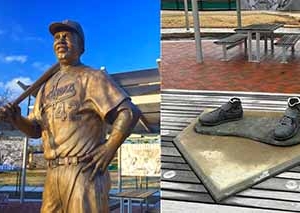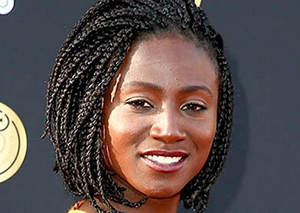
As Black History Month draws to a close, Sandrarose.com recognizes a woman whose unique cancer cells pioneered many medical and science breakthroughs.
The descendant of African slaves and their masters, Henrietta Lacks was born in 1920 in Roanoke, Virginia. She grew up dirt poor on a tobacco farm in Clover, Virginia after her mother died while giving birth to her 10th child.
Unable to raise 10 children on his own, Henrietta’s father sent her to Clover to live with a male relative.
The four-year-old girl shared a bedroom with her 9-year-old male cousin, David “Day” Lacks, her future husband.
Before long, the children were sexually active. Being sexually active at an early age probably led to Henrietta developing cervical cancer later on.
Henrietta gave birth to her and Day’s 1st baby, a boy, at age 14. Four years later, a girl with neurological disabilities was born.
Henrietta and Day married in 1941 when she was 20. She bore 3 more children for Day.
Four months after giving birth to her last child at age 30 in 1951, she was diagnosed with cervical cancer after complaining of severe abdominal pain.
She began cancer treatments at the Johns Hopkins Hospital in Baltimore, the only hospital in the area that treated black patients at the time. She died several months after she was admitted to the hospital. She was 31.
During an earlier treatment session, a lab technician took two samples of tissue cells from Henrietta’s cervix without her permission. One sample was of healthy cells and the other sample was of cancerous cells.
The samples were given to Dr. George Otto Gey, a cancer researcher at Johns Hopkins, who noticed that her cancer cells divided at a very rapid rate without dying.
Dr. Gey isolated a particular cancer cell from Henrietta’s sample and divided it multiple times, using the same cell for multiple tests. Dr. Gey named the new line of research cells HeLa cells, by using the first 2 letters in Henrietta’s first and last names.
All cancer cells divide at a rapid rate. The difference is cancer cells usually die after several days outside of the body. But Henrietta’s cancer cells lived much longer, allowing doctors and researchers more time to conduct their tests.
Dr. Gey sent the HeLa cells to other labs for research projects. Soon Henrietta’s HeLa cells were in very high demand. Scientists eventually reproduced 20 tons of HeLa cells in labs all over the world.
HeLa cells led to many medical breakthroughs through research and testing. The cells were used in the development of the polio vaccine, AIDS research, gene mapping, and in testing commercial products such as cosmetics, tape, glue, etc.
An unscrupulous doctor even injected Henrietta’s cancer cells into state prisoners to see if he could transmit cancer or stimulate their immune systems to produce antibodies to cancer. The experiments failed miserably.

Eventually, Henrietta’s family members learned about her significant contributions to medical research, and started asking questions.
Henrietta’s story began to circulate. Books were written; documentaries aired on TV, and Oprah acquired the book rights for a movie.
The Morehouse School of Medicine holds its annual HeLa Women’s Health Conferences; Johns Hopkins established the 1st annual Henrietta Lacks Memorial Lecture Series in 2010; and she received a honorary doctorate in 2011 from Morgan State University.
Also in 2011, Vancouver, Washington named the new Henrietta Lacks Health and Bioscience High School in her honor.
In August 2013, members of the Lacks family reached an agreement with the National Institute of Health, giving the family more control over access to the HeLa cells’ DNA sequence.





